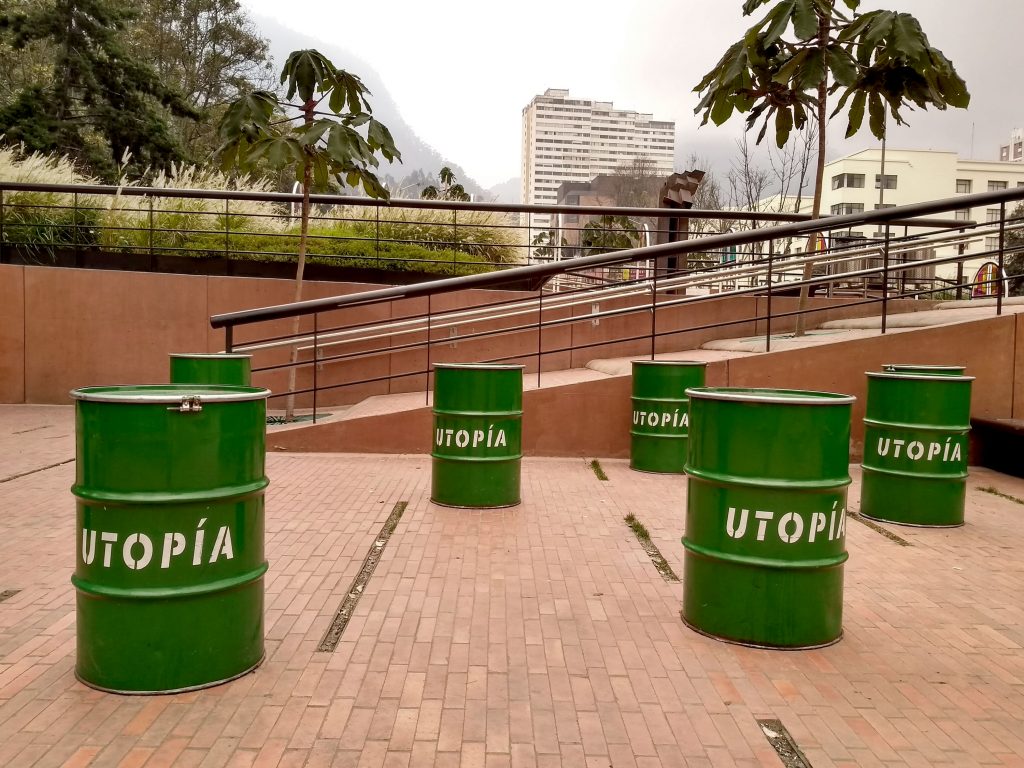

Spotlight on the Global Initiatives Grant Program: Open Anthropology Lab, Bogota, Colombia
Anthropology Xñ is an editorial project of anthropology for children. It aims to enhance their questions and curiosity through the exploration of contemporary social issues. We aim to encourage in children a critical understanding of human relationships, cultural differences and processes of social change. This first series is made of three open-access didactic books about (1) Ecologies, (2) Globalization, and (3) Race. Each book is created collaboratively by a group of passionate anthropologists who transform ethnographic data into tales, games and outdoor activities.
With the support of the Global Initiatives Grant the Open Anthropology Lab’s team developed three books of this series:: Ecologies, Globalization, and Race.
Methodology
The Covid 19 pandemic led us to develop a very particular and innovative methodology for our Anthropology Xñ project. For the last two years, the Open Anthropology Lab team met virtually once a week to collaboratively create the contents of the three books we have prepared for this series. The following is the regular process we would follow for the development of each book:
In the first few weeks, we would discuss the timeline, the structure and the objectives of the book. We define the chapters, four sub-topics for each chapter and relevant anthropological literature for each sub-topic. The team of approximately 8 people would divide into four working groups, corresponding to each sub-topic of the chapter. Each member of the team was part of two groups. Within these groups, people distributed the readings corresponding to each sub-topic. Afterwards, we will devote three sessions to each chapter.
2) In the first session, we would create two simultaneous meetings on Zoom in which the members of each sub-topic discussed the readings and proposed an activity. At the end of the session, the groups would meet again and present their ideas to the rest of the team.
3) In the second session, each group would bring a refined version of their idea and present their proposals on a design at www.canva.com. After that, all members of the team make comments and suggestions.
4) In the third session, the team would discuss the last corrections and form new groups for the next chapter. The process starts all over again for the remaining chapters.
5) When finishing the chapters of the book, we would form groups again to work on the diaries, the glossary, and the proof reading of the book. This process usually took between three and four weeks.
7) Finally, the Canva files were shared to the illustrator who used them as a reference for her own designs.
The books…

Ecologies
In this book we explore the relationship between humans and the environment. It is called Ecologies because we believe that it is possible for the human species to find a balance for its actions to do not negatively impact the planet Earth and the non-human beings that inhabit it. This book is divided into four main chapters. In the first one, we examine the different ways in which societies have related to non-human beings. In the second, we explore how humans have adapted to the different environments in which they live: the countryside, the city, deserts, among many others. In the third, children will learn about the main conflicts that arise when there are disagreements about how people should relate to the environment and natural resources. The fourth chapter encourages children to critically assess the solutions that have been proposed to address the environmental crisis.

Globalization
This book encourages children to critically assess globalization as a phenomenon of connection and disconnection, of wealth and inequalities between and within countries. This contradiction is in part the result of the desire of powerful nations to conquer and exploit other territories. These unequal relationships are what makes it less expensive to bring things like clothes, backpacks and cell phones from far away places. In this book, children will also learn the life stories of those that make globalization possible: factory workers, miners, home workers, among many others. We hope that this book will provide some the tools to face the challenges of globalization and make this world a less unequal place.

Race
This book is divided into four major chapters. Each of them encourages children to explore from different angles how the concepts of race and ethnicity have been constructed and the consequences on racialized people. The contents have been carefully organized so that they can learn about struggles against racism and discrimination, how racist practices can be reproduced on our everyday lives, and the history of how the strange idea that there are different human races came about. The last chapter explores the idea of intersectionality by creating a relational game that enables synthesis and reflection about racism and race. Crucially, it also encourages students to construct an anti-racist manifesto.
Note: All three books encourage children to have a Diary in which they can write or draw their reflections and everyday actions to help them reinforce what they’ve learned in the books.
Conclusions
We developed a collaborative learning methodology that allowed us to move forward with the consolidation of the corresponding chapters based on two-hour virtual meetings. The methodology was designed to avoid a hierarchical structure that led everyone contribute equally to the creation of the contents.
Our challenge is to accomplish a distribution strategy for books in school contexts in Colombia and Latin America, which allows us to make them Open Access while keeping the copyright of the books. One potential challenge is that the distribution strategy could be accompanied by teacher training on each topic of the book. This would allow the carrying out of pedagogical work so the books can be used in the best possible way. We are currently developing these guides, which will explain to teachers key anthropological concepts and will give them some instructions on how to use the books.